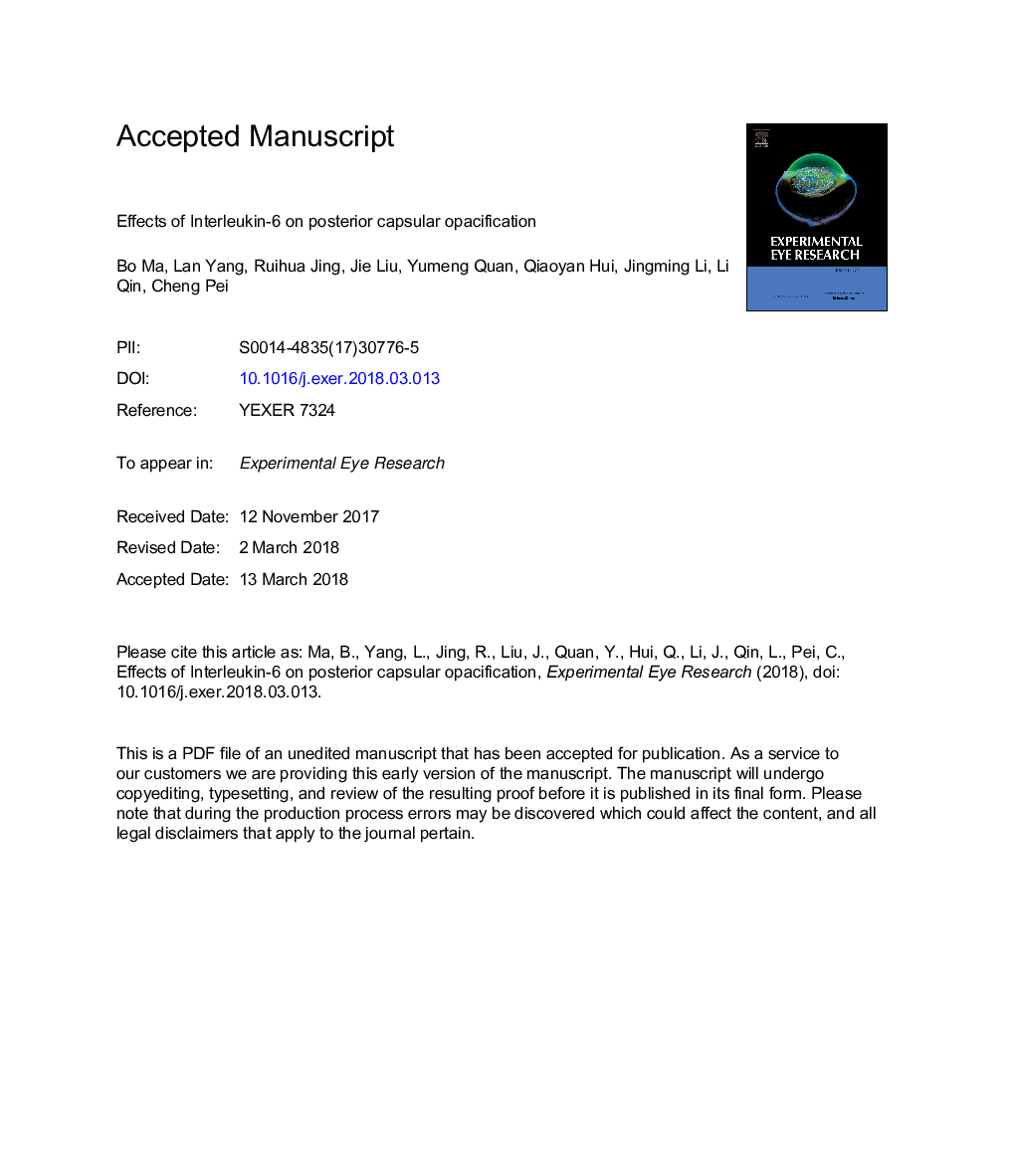| Article ID | Journal | Published Year | Pages | File Type |
|---|---|---|---|---|
| 8791967 | Experimental Eye Research | 2018 | 39 Pages |
Abstract
The purpose of this work was to determine the effects of interleukin-6 (IL-6) on the development of posterior capsular opacification (PCO) in vitro and in vivo. Western blot and real-time PCR were used to test the IL-6-induced epithelial-mesenchymal transition (EMT) marker α-smooth muscle actin (α-SMA), the extracellular matrix (ECM) markers fibronectin (Fn) and type I collagen (COL-1), transforming growth factor β2 (TGF-β2), and the activation and role of the JAK/STAT3 signaling pathway in human lens epithelial cells (HLECs). Immunocytofluorescence staining was performed to detect gp130 and IL-6Rα expression in HLECs. Rat PCO models were then established to examine the impact of STAT3 knockdown by shRNA adeno-associated virus on PCO development, and immunohistochemical staining was performed to detect the expression of Fn in the anterior and posterior capsule in vivo. We found that IL-6 promotes the expression of Fn, COL-1, TGF-β2, p-JAK2 and p-STAT3 in HLECs but exerts little effect on α-SMA. The JAK/STAT3 inhibitor WP1066 effectively suppressed the IL-6-induced expression of Fn and COL-1 in lens epithelial cells. STAT3 knockdown effectively inhibited the development of PCO in rats and significantly reduced the expression of Fn in the anterior and posterior capsule. These data suggest that IL-6 contributes to the development of PCO by promoting TGF-β2 activation and ECM synthesis through a JAK/STAT3 signaling-dependent mechanism. Furthermore, inhibiting JAK/STAT3 signaling effectively impairs both PCO development in rats and ECM synthesis in the lens capsule.
Related Topics
Life Sciences
Immunology and Microbiology
Immunology and Microbiology (General)
Authors
Bo Ma, Lan Yang, Ruihua Jing, Jie Liu, Yumeng Quan, Qiaoyan Hui, Jingming Li, Li Qin, Cheng Pei,
